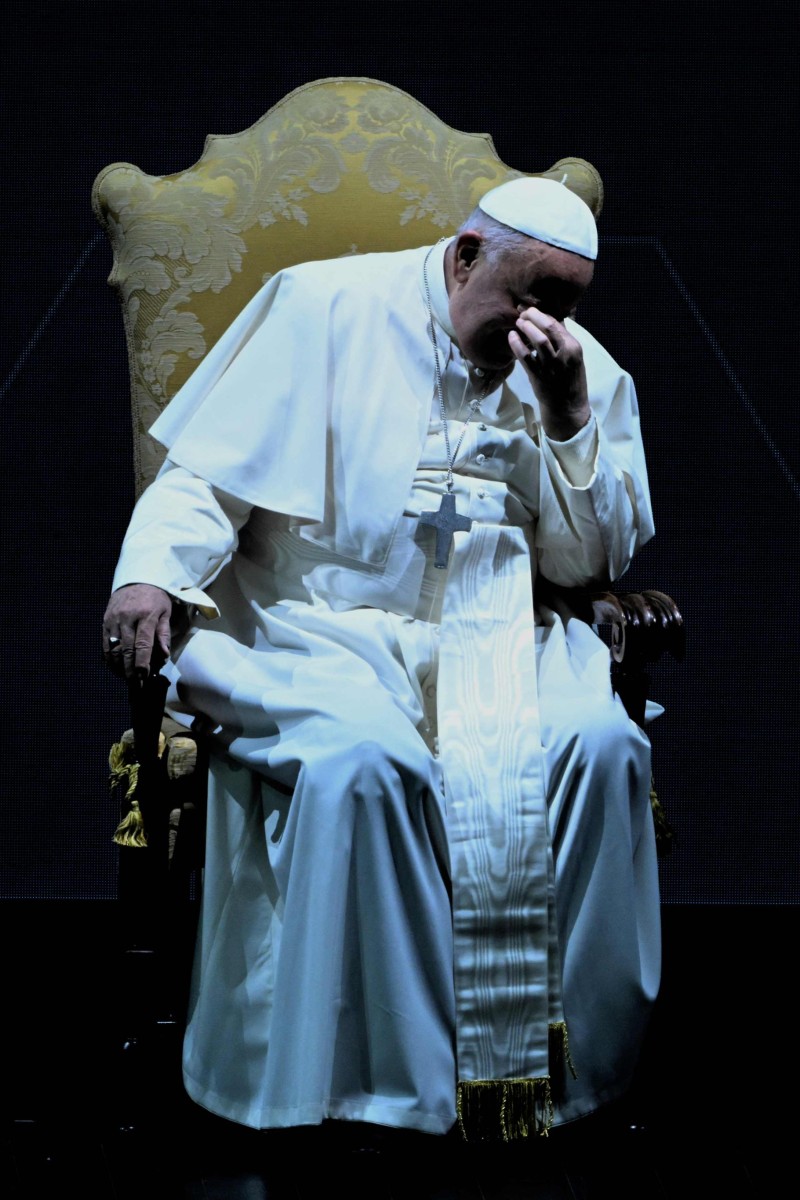
Pope Francis dies at 88: first Latin American pope advocated for peace and compassion
Head of the Catholic Church, whose reform efforts attracted fierce supporters and critics, blessed thousands on Easter Sunday, one day before his death
 Pope Francis, the head of the Catholic Church, died on April 21, 2025. Photo: AFP
Pope Francis, the head of the Catholic Church, died on April 21, 2025. Photo: AFPPope Francis, the first pope from Latin America, died on Monday at the age of 88.
He charmed the world with his humility and concern for the poor – but alienated conservatives over climate change and criticisms of capitalism.
Bells tolled in church towers across Rome, Italy, after an announcement by Cardinal Kevin Ferrell from the chapel of the Domus Santa Marta in Vatican City, where Francis lived.
“At 7.35 this morning, the Bishop of Rome, Francis, returned to the home of the Father. His entire life was dedicated to the service of the Lord and of his Church,″ Ferrell said.
Francis entered Gemelli hospital on February 14, 2025, for a respiratory crisis that developed into double pneumonia. At 38 days, it became the longest hospitalisation of his papacy. Part of his right lung was removed in the late 1950s after a bout of pneumonia, and he suffered from chronic lung disease.
From March: Weak but stable Pope Francis sends first audio message from hospital
He emerged on Easter Sunday – his last public appearance, a day before his death – to bless thousands of people in St Peter’s Square, drawing wild cheers and applause.
From his election on March 13, 2013, the Argentine-born Jorge Mario Bergoglio signalled a different papacy, embracing refugees and the downtrodden, especially following the troubled tenure of Pope Benedict XVI, who surprisingly resigned.
But conservatives grew increasingly upset with Francis’ progressive disposition, outreach to LGBTQ Catholics and crackdown on traditionalists. He also badly botched a notorious case of clergy sexual abuse in 2018.
The crowd-loving, globe-trotting pope navigated the church through the coronavirus pandemic from a locked-down Vatican City, declaring it “has shown us that we cannot live without one another, or worse still, pitted against one another”.
A religious calling at age 17
Born in Buenos Aires, Jorge Mario Bergoglio was the eldest of five children of Italian immigrants. He credited his grandmother Rosa with teaching him how to pray.
He said he decided on the priesthood at 17, entering the diocesan seminary four years later. In 1958, he switched to the Jesuit order, attracted by its missionary tradition and militancy. He was named head of the Jesuits in Argentina in 1973 at age 36.
A decree for reform
Francis was elected on a mandate to reform the Vatican bureaucracy and its finances, but he went further, shaking up the church itself without changing its core doctrine.
Asked about a purportedly gay priest, he famously responded, “Who am I to judge?” – a welcoming message to the LGBTQ community and those who felt shunned by the church.
Francis changed church positions on the death penalty, declaring it inadmissible in all circumstances, and modified its stand on nuclear weapons by saying their possession was “immoral”.
In other firsts, he approved an agreement with China on bishop nominations that had confused the Vatican for decades and charted new relations with Muslim leaders.
But his real revolutionary change came in emphasising the church should be a refuge for those on society’s fringes: migrants, the poor, prisoners and outcasts.
Explainer: What does it mean when Catholic priests bless same-sex unions?
Missteps
Over a year passed before Francis met survivors of priestly sexual abuse. Victims’ groups questioned whether he understood the scope of the problem.
His papacy’s greatest crisis came in 2018 when he discredited Chilean victims of abuse and stood by a bishop linked to their abuser, a notorious paedophile. Francis later invited the victims to the Vatican for a personal apology and summoned the leadership of the Chilean church to have them resign.
Another crisis erupted over ex-Cardinal Theodore McCarrick, the retired archbishop of Washington and a counsellor to three popes.
Francis had sidelined McCarrick after an accusation he had molested a teenage altar boy in the 1970s. Still, the Vatican’s one-time US ambassador, Archbishop Carlo Maria Vigano, accused Francis of rehabilitating McCarrick early in his papacy. Francis eventually defrocked McCarrick after an investigation determined he sexually abused adults as well as minors.
Two popes in the Vatican
Francis’ election after Pope Benedict XVI’s stunning decision to resign and retire – the first in 600 years – created the unprecedented reality of two popes on Vatican grounds. Despite the potentially uncomfortable shadow, Francis embraced Benedict as an elder statesman and adviser until Benedict’s death in December 2022.
Francis did not pursue previous popes’ anti-abortion agendas.
His boldest anti-corruption steps were wrestling the Vatican’s bureaucrats into line, limiting compensation and ability to receive gifts, and eliminating obstacles to criminal prosecuting cardinals.
Economic justice was important to Francis, who said he wanted a “poor church that is for the poor”.
In his first major teaching document, he said, “the powerful feed upon the powerless” without regard for ethics, the environment or even God.